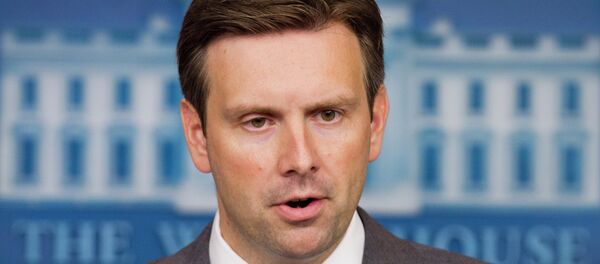Kristian Rouz — Future bets on S&P 500 inched higher overnight in New York as the markets are calm ahead of the Fed policy decision due at 2 PM in Washington on Wednesday.
While the US shares posted their greatest advance in two weeks on Tuesday, the overnight trading in stock futures saw only minor gains as earnings season is too early to sum up, and the outcome of the two-day Federal Reserve policy meeting is unclear. S&P 500 E-minis expiring in September rose only 0.1% at 2,089.75 by early morning in New York. The broader S&P Index rose 1.2% the previous day after a five-day retreat. Meanwhile, futures gains in the Dow were negligible, at just 36 points to 17,582 points.
Market participants perceive the Fed as overtly dovish and cautious, thus on Wall Street the expectations are that borrowing costs are most likely to remain ultra-low beyond September. The Feds priority is to support the market, and while the growth in real economy is still sluggish, significant policy moves are hardly an option. Adding to such a sentiment, the GDP figures are to be revealed on Thursday, meaning even if the US economy has accelerated enough for a hike, the regulator will know only a day after it takes a decision.
Is the Federal Reserve ready to take a risk? Not really.
Yellen’s stance on the matter is rather dovish. Earlier in July she said a premature increase in borrowing costs will impair the expansion in the US economy, quite an unlikely course of events. However, another protraction will require a greater one-time hike in base interest rate later on, meaning a bigger shock to the economy.
There are several factors determining the Fed’s decision to be announced today. So far, the odds for a September hike are still even.
There are 17 members on the Fed policy board, and general opinion is that two moderate hikes would be more appropriate and less shocking to the economy, than just a one-time hike in, say, December, just before the winter freeze, traditionally impairing the performance of the US economy. In Richmond, VA, local Fed President Jeffrey M. Lacker was recently quoted as favoring a September hike. Even a symbolic take-off from the current zero-to-0.25% base interest, he said, would help the market articulate the right expectations, allowing it to build more relevant medium-term growth strategies.
However, the decisive factor for the Fed, set board members’ opinion aside, is the macroeconomic situation. In the labor market, the jobless rate is at the acceptable 5.3%, and the overall situation is better, though not perfect. No ‘full employment’ has yet been reached, while a lot of the unemployed quit their attempts to find a job, receiving social benefits instead.
US inflation is way below the Fed longer-term target. As oil and commodity prices are falling, lower production costs are effectively holding down the unwinding in consumer inflation. As growth potential is thus very limited, the Fed might easily duplicate their June wording without any decisive action.
The previous policy meeting took place on June 16-17, with the Fed stated to “see the risks to the outlook for economic activity and the labor market as nearly balanced.”
As outlined above, the ‘risks’ are actually balanced, meaning the Fed could drop the word ‘nearly’ from today’s statement. In the event that this actually happens, there will be two options, either a sudden September hike and then a December hike, or a one-time major December hike, again, either an announced beforehand, or a sudden one. The latter two options will stir great market uncertainty, spurring demand for US dollars, thus hitting the US economy.
Meanwhile, the US GDP is estimated to have added an annualized 2.5% in Q2, while the consumer demand might have pushed it to as much as 2.7%. Thursday’s BEA report will make the situation clearer, still, as the growth is only moderate, the Fed will be reluctant to communicate its planning to the market this time around.





